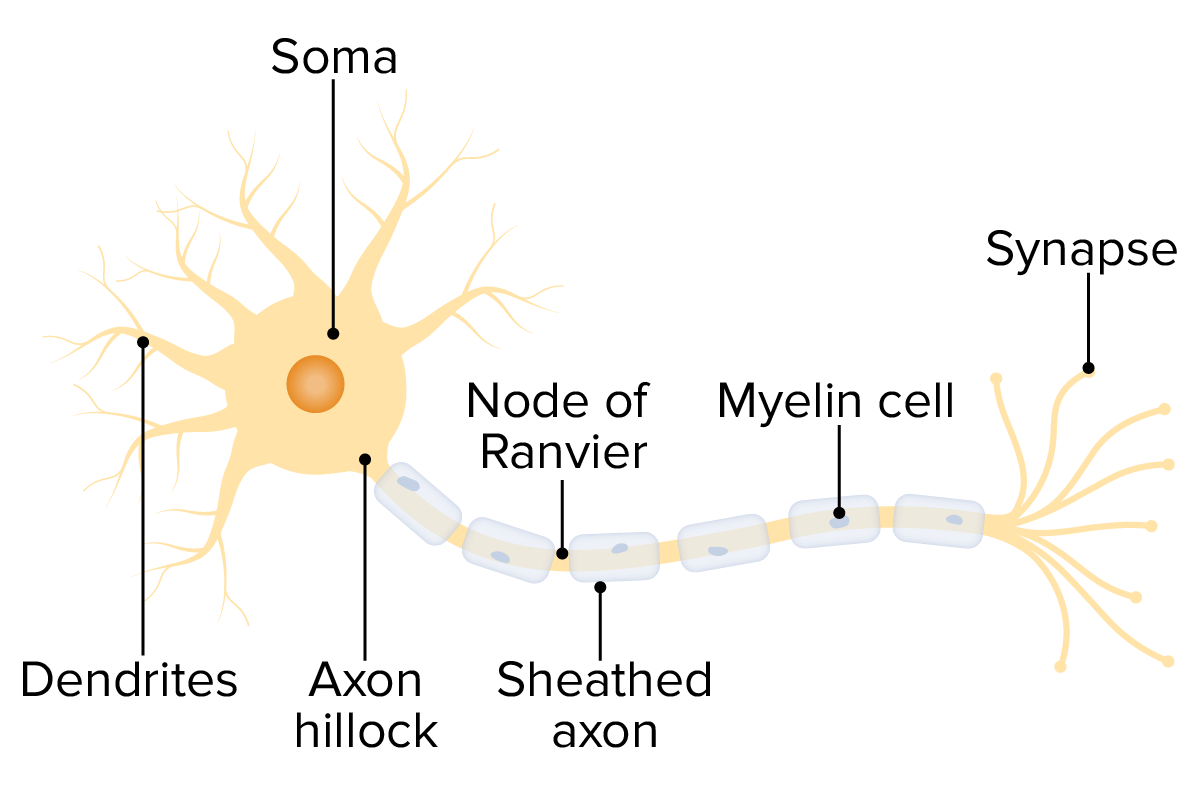Playlist
Show Playlist
Hide Playlist
AIDP: Pathophysiology and Diagnosis
-
Slides Acute Inflammatory Demyelinating Polyneuropathy.pdf
-
Download Lecture Overview
00:01 What's going on with Guillain-Barre? What's the pathophysiology of AIDP? Well, this is an inflammatory disorder and involves both cellular and humoral immune features. 00:12 Some of those humoral immune features, or B cell antibody features include production of antiganglioside antibodies. 00:19 Some of those include GM1, GD1a, and GQ1b, which are associated with certain variants of Guillain-Barre. 00:27 But at the end of the day, what's going on is the immune markers that are within the systemic circulation are able to break through and gain access to the nerve. 00:36 This results in breakdown of the myelin and demyelination, as well as sensitization of T-cells to myelin basic protein propagating this immune response. 00:46 We see immune attack on the distal nerve, we see immune attack on the proximal nerve, and that results in both with prominent weakness and early areflexia as well as some component of sensory abnormalities. 00:57 commonly in these patients. 01:03 Let's think a little bit more about our diagnosis and how we use lumbar puncture which is the most important test to evaluate for an inflammatory nerve disorder. 01:12 We're looking for signs of inflammation and classically an inflammatory LP is elevated protein with normal cells. 01:18 We call this albuminocytologic dissociation which is something to know that term is often associated with Guillain-Barre, but that pattern can be seen with any inflammatory disorder of the nerve or central nervous system. 01:33 Albuminocytologic dissociation means elevated albumin, elevated protein with normal cells, no pleocytosis or minimal pleocytosis. 01:43 And again, we can see mildly elevated cells or pleocytosis, but typically not more than 10 or 20. 01:51 EMG nerve conduction is also important. 01:53 And again in classic AIDP or Guillain-Barre, we see demyelinating findings. 01:58 Prolong distal latency, asymmetric reduced conduction velocity, we may see conduction block or prolonged F-waves, and all of those things are indicating an inflammatory disorder of the myelin and are supportive of a diagnosis of the AIDP. 02:16 We may also see axonal patterns and that would point us to a variant of typical classic Guillain-Barre and may influence prognosis. 02:26 So how do we treat a AIDP or Guillain-Barre? Well, this is an immune mediated disorder. 02:32 And so we use immunomodulating therapy. 02:34 We typically don't use steroids for this condition, and a treatment is reserved for intravenous immune globulin or plasmapheresis. 02:43 We don't treat the underlying pathophysiology the nerve damage. 02:46 The goal is to reduce ongoing damage and allow the nerve to reinnervate and to reinnervate over time. 02:53 The goal of treatment is to reduce the severity of the nadir to prevent patients from requiring mechanical ventilation or respiration. 03:02 We want to limit the need for that intubation and reduce the duration of intubation if necessary. 03:07 And importantly, we do need to monitor respiratory status to evaluate respiratory and pulmonary function in these patients. 03:16 There are some complications that we can see with Guillain-Barre, and some key findings and associated symptoms that we watch for in hospitalized patients with this condition. 03:26 The first is patients can develop an autonomic neuropathy that can result in cardiac instability. 03:31 arrhythmias, heart block. 03:32 We can see SIADH. 03:34 We do monitor patients on telemetry, we monitor respiratory status frequently and do consider laboratory studies to evaluate for these associated complications.
About the Lecture
The lecture AIDP: Pathophysiology and Diagnosis by Roy Strowd, MD is from the course Acute Inflammatory Demyelinating Polyneuropathy (AIDP).
Included Quiz Questions
Which of the following is true of the pathophysiology of Guillain-Barré syndrome?
- There is both a cellular and a humoral component that attacks the myelin surrounding the nerve.
- B cells make antibodies that attack the axon of the nerve.
- T cells are sensitized to Na+ channels in the cell body.
- T cells are sensitized to membrane proteins in the nodes of Ranvier.
- B cells make antibodies that target acetylcholine receptors at the neuromuscular junction.
Which of the following is NOT a commonly associated complication of acute inflammatory demyelinating polyradiculoneuropathy (AIDP)?
- Renal failure
- SIADH
- Autonomic neuropathy
- Cardiovascular instability
- Respiratory failure
Customer reviews
5,0 of 5 stars
| 5 Stars |
|
5 |
| 4 Stars |
|
0 |
| 3 Stars |
|
0 |
| 2 Stars |
|
0 |
| 1 Star |
|
0 |




